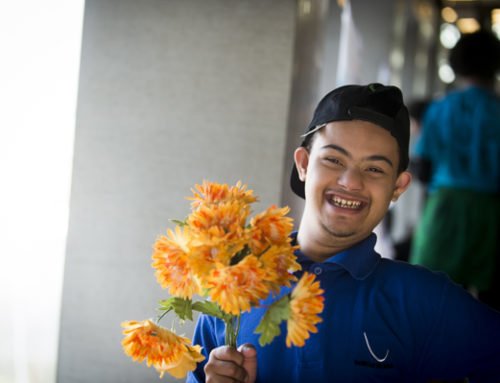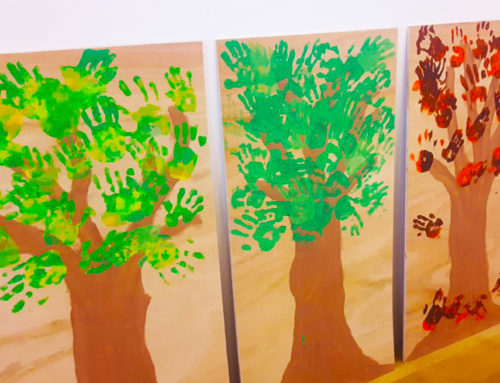
Maromas Londres fashion presentation PC: ICA London.
On Saturday 1 December 2018, the ICA opened its doors to the UNFASHIONED Museum, a free day of fashion, artist-led workshops, talks, presentations and interactive installations, curated by the London College of Fashion, GUAP Magazine and Sonic Gaze.
The UNFASHIONED Museum event was the first event of its kind, exploring the social shifts and emerging transitions in fashion and identity, and unearthing how they’re connected to club scenes and music. The UNFASHIONED Museum celebrated non-normative fashion, with a focus on the value of art and design that can be expressed as freely as possible.
LCF’s Insights Autumn School students installed their incredible textiles, mood boards and installations, while Studio-K led s t-shirt screen-printing workshop, and Tyler Phoenix created bespoke nail designs.

LCF Insights Autumn School showcase PC: ICA London.
Later, GUAP Magazine and Sonic Gaze programmed some fantastic talks, followed by LCF Menswear graduates Maromas incredible fashion presentation, with DJ sets from Ashleigh and Resis’s dance.

Tyler Phoenix nail art PC: ICA London.
I spoke to London College of Fashion’s Insights textiles tutor, Josephine, who told me:
The students were able to work to the brief of ‘Nonnormative fashion’ and they were inspired by the ‘non ideals’, meaning that there was no pressure to ‘fit’ into a box, and that the students could design as freely as they wanted to and express their own unique selves.
She felt that knowing their project would be showcased at the ICA had given the students a focus. Some of the students told me that, ‘For the collection our muses where based on our own cultural experiences.’ Working from a textiles perspective had allowed the students to be inspired and to explore the process of designing from a ‘no strings attached’ point of view.
Is diversity in fashion just the latest trend?
Personally, I’m interested in the themes opened up by the panel discussions in relation to fashion and diversity. The first GUAP talk, hosted by Lola Michelle, asked, ‘Is diversity in fashion just the latest trend?’ The panel included Designer and Creative Director Aji Ayorinde; Founder of ‘Black girl in Fashion Debora Tonet; and Freelance Writer, Public Speaker and plus-size Fashion Blogger Stephanie Yeboah.

GUAP Talk 1: Is diversity in fashion just a trend? With Stephanie Yeboah, Debora Tonet, Aji Ayorinde and host Lola Michelle PC: ICA London.
For me, being a young disabled mixed black female, ‘diversity’ is a broad topic and can mean so many things, that sometimes I think we can get slightly lost when this conversation topic comes up. Diversity in fashion shouldn’t really be described as a trend.
The meaning of ‘trend’ to me, is seeing something others look to; something that others can potentially follow, something that constantly changes.
Within Product design we respond to trends as a source of inspiration. It reminds us that there’s a path. Can ‘trends’ be disrupted or changed? Do we always have to ‘follow’ set of rules that may have been painstakingly made for us?
Representation is important in any industry you happen to work in, and I think it’s more important within the fashion industry. Now that the fashion industry is becoming more inclusive and diversity aware, like with plus-size model activist, Ashley Graham, and disability activist, Jillian Mercado, paving the way, we are starting to see change in body positivity within advertising and getting a more realistic sense of what real role models should be look like. But we still have a long way to go.

GUAP Talk 2: Can you choose your identity, or is it chosen for you? With Ashton Attz, Jenna Hartmann, Alexander Aplerku, Seyon Amosu and host Lola Michelle PC: ICA London.
Sonic Gaze – Queering the Norm: design, fashion and music
Sonic Gaze wanted to look at the relationship between club cultures, fashion, music and inclusion. According to Sonic Gaze, queering the norm ‘… is a method that can be applied to look for place where things such as gender, sexuality, masculinity and femininity can be challenged and questioned.’ (Anjuli Prashar-Savoie)

Sonic Gaze Talk: Queering the Norm. With Virginia Wilson, Mauro Pitteri and THhomas Harvey (Maroms Londres) alongside hosts Anjuli Prashar-Savoie and Lizzie Masterton PC: ICA London.
Panellists were Virginia Wilson, the co-founder of Resis’dance, a diverse DJ collective who challenge gender norms in the entertainment and political scenes; LCF Menswear graduates MAROMAS, AKA designers Thomas Harvey and Mauro Pitteri; and Lizzie Masterton and Anjali Prashar-Savoie of Sonic Gaze, a queer collective whose project aims to reclaim the sonic through listening, making and desiring.

Maromas Londres fashion presentation PC: ICA London.
Looking at the Maromas garments on show, I felt that no garment looked the same – each piece had its own unique style whilst having a recognisable signature style.
When I asked Thomas from Maromas Londres about their collection, he said it was about ‘Taking something normal and recognising it has a place … the collection was about attempting to challenge gender stereotypes within design.’ Discussion turned to Pxssy Palace, which is a club night promoting and creating spaces for people to ‘let go’ and feel free to express themselves however they want. ‘I think it’s so important to feel safe, especially when you’ve had a drink or two’, one of the panellists commented. It’s about being yourself without fear of judgement. Then dancing and having fun there, one does not feel judged and can therefore enjoy themselves more.
Pxssy Palace push the boundaries of what it means to feel free within a contained environment. Club culture has now become very open and inclusive. People are taking inspiration from those who might not feel included, and making their own opportunities and ways to feel included, which I think it great. Safer spaces policies can help create social change! I think it’s really important to have conversations around gender and diversity, but when it comes to ‘representation’, we have to remember is that there are many other forms of diversity too that are still left uncovered. When do we really talk properly about diversity in terms of masculinity, body disfigurements, or mental health?
Summing up …
I attended a talk at the Southbank Centre as part of ‘WOW Festival’ earlier this year, where they spoke about inclusivity within the arts and cultural sectors. I felt, when listening to the talk, that disability wasn’t mentioned at all and I was disappointed. When we talk about inclusivity, we need to be aware and respectful to other platforms that have voices too. Today’s UNFASHIONED Museum offered a supportive platform for challenging such ‘normed thinking’ and which a member of the audience sums up really well. Speaking about her experience of the day, she said:
I enjoyed the event very much. There was a great, mixed crowd of innovative young people across the creative industries with different abilities, disabilities, different abilities and causes but everyone was united through their open-minded outlook on life. It sounds like a cliché but that was truly the vibe. Every single person I spoke to was inspiring and I spoke to many. There were some great sartorial moments. It wasn’t fashion bought off the shelf (neither high street nor high end label) but it was about style. The outward outfit was an expression of the inner self and/or one’s immediate community. It was an authentic expression of identity but also a refusal to be compartmentalised. To me, it felt like the new generation in the great tradition of London’s street style tribes. The talks were great, too. It was fantastic to see a full venue of young creative influencers discussing issues that matter on a Saturday night! The fashion presentation at the end was the perfect way to start the party.
I agree – society is catching up with culture, and long may authentic expressions of identity continue!





